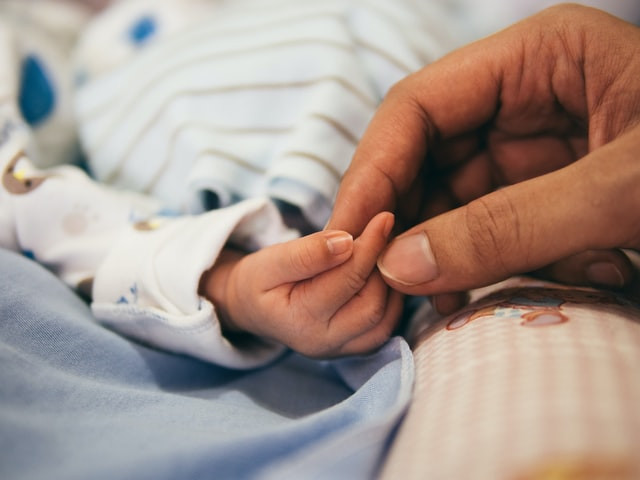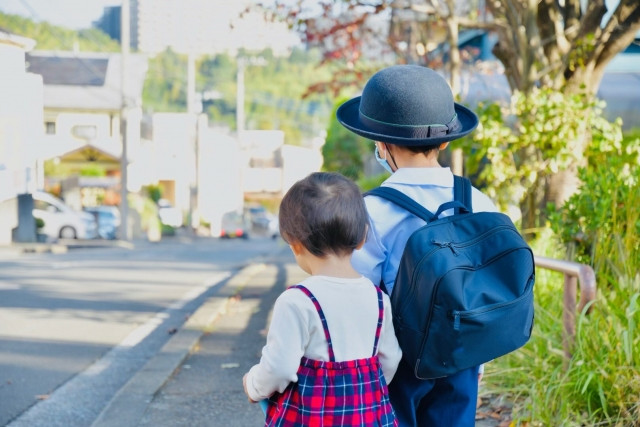Parenting has been one of the most crucial roles in societies since time immemorial. Taking into account its cost, one may ask, considering the high living standards of Japan, what does it cost to raise a child? Here is some useful information related to child-rearing expenses in Japan.
Table of Contents
- Investing in your child’s future
- Childcare expenses in Japan
- Primary and Secondary Education and on
- Childcare programs by the government
- Summary
Investing in your child’s future
One of the most challenging daily activities involves caring for children and bringing them up to become mature, well-rounded and responsible individuals. It is, however, an investment worth a lifetime of rewards and pride for the family and the community.
Whereas families had comfortably managed to survive and attain domestic stability on a single-income financial source previously, today, it’s not uncommon for both parents to work, and sometimes even a double-income source may still not suffice to support a large family. Wise parenting in the modern setting requires families to either acquire insurance or to lay aside cash savings, apart from the practice of minimizing unnecessary expenses, such as foreign travels or buying luxury items and branded gadgets.
Childcare in Modern Day Japan
With the changing social and economic landscape, the home scene also became transformed to such that both parents today have to leave infants and growing children with their own parents or other relatives to care for them while the parents earn a living. Daycare centers have also become a thriving specialty enterprise before the turn of the 21st century.
The decline of the size of the family as a social unit has grown more rapidly in Japan within recent years, a trend that began to be felt. There were over 16 million children from 0-14 years old in 2018, covering only 12 percent of the overall population, a record-breaking decrease from previous years. This is a sharp decrease for almost 12 consecutive years and a continuous decline since 1993. The changing demographics required new costs, instituting reforms and providing assistance to families in order for them to cope with the burden of caring for children and providing sustenance and proper education as they mature. We will highlight some of them here in this article.
※ Statistics Bureau of Japan, "Statistical Handbook of Japan 2019," p.15
Writer's Pick
Childcare expenses in Japan

Figures on bringing up a child in Tokyo from giving birth to graduating from college averages from about 29 million yen to over 60 million yen. Within that total, living expenses could reach as high as 16.4 million yen. The lower rates are those who opt to send their children to public schools, while private education can make the difference of 30 million yen in total child-rearing expenses, especially if they pursue medical studies. These numbers are based on a survey done in 2005, still heavily utilized by many to provide figures for current child-rearing expenses - however, costs may have fluctuated since then.
※ Cabinet Public Relations Office, "子育て(教育)費負担問題と教育(修学)支援制度の整備・充実の課題"
Childcare begins with maternal care, as the expectant woman must begin the arduous task of maintaining her physical, psychological and biological health through proper diet and rest. Many developed countries such as Japan have high costs of childbirth, where prenatal care can run-up to an average of 5,000 to 10,000 yen per visit. Hence, over the whole pregnancy period, somewhere between 50,000 to 150,000 yen will be paid for 10 to a dozen visits to the gynecologist. Hospital expenses and delivery costs may raise the expense up to 1,000,000 yen or more. However, discounts are offered.
※ Japan Healthcare Info, "How much?"
Japanese mothers prefer to take care of their own children, instead of letting others do it, unless nearby relatives, such as grandmothers can take time off to babysit while the mother does errands. Those who can afford the expense employ trained nannies to look over the children, although this practice isn’t too common.
Unlike in western countries, Japanese families rarely hire babysitters, who may charge around 2,500 yen per hour for every child for a minimum of 3 hours. These babysitters are often resorted to only during emergencies, as rates are high especially on weekends and National holidays in Japan.
※ Babysitters, "Price"
Day-care and pre-elementary school facilities and education

Daycare centers, on the other hand, are relied on to oversee pre-school children of working Japanese couples. Those who wish to avail themselves of these services must apply through local government offices for a slot or to private daycares within the area. However, it’s often said that competition is quite fierce for these slots, especially in the city, and waiting lists can be quite long. Food is served to children in these centers, where they will take naps and stay in the center from around 9:00 am to 6:00 pm, depending on the parents’ needs.
Kindergartens provide learning opportunities for children. Parents may apply directly to the schools. Children often bring their own lunch, naps are seldom included and the children stay till 2:00pm or 3:00pm.
Companies sometimes provide day care for their employees through in-house centers. All these facilities, while allowing freedom and flexibility for parents, also allow children to gain valuable social and academic skills and to prepare for their life as adolescents and adults.
Daycare and Kindergarten fees depend on the parents annual income and some may range from 20,000 to 80,000 yen monthly, depending on location and the type of facility (public or private). The average costs for public kindergartens would be around 223,500 yen per year, and around 528,000 per year for private ones. The calculation, found by survey in 2018, is inclusive of tuition, and lunch fees, as well as extra curricular activities.
※ Japan Healthcare Info, "Daycare, Nursery and Kindergarten" ※ Ministry of Education, Culture, Sports, Science and Technology, "平成30年度子供の学習費調査の結果について," p.1
Primary and Secondary Education and on

Elementary students often spend time with their friends playing in playgrounds after school while most middle school and high school students finish school around 4:00 and have after school club activities. After that, they come home and take a quick break before heading to cram school to catch up on school classes and study for high school or university exams, usually thrice a week from whenever they are done with school to around 10:00pm or on weekends.
Students also often have various after school lessons, such as music (piano is a popular one), art, dance, martial arts, and various sports (baseball, swimming, etc.) or even classes like calligraphy. All these formal and informal studies require additional expenses for the families.
For reference, enrolling a child for primary education in a public school incurs a cost of around 320,000 yen per year, while a private school would be around 1,600,000 yen per year, including said extracurricular activities.
In comparison, high school and university costs also range differently depending on the type of school. The following are estimated costs that one should expect to be incurred in the latter years of the child’s education after primary schooling.
Private schools
-
Junior High School - 1,406,433 yen per year
-
Senior High School - 969,911 yen per year
Public Schools
-
Junior High School - 488,397 yen per year
-
Senior High School - 457,380 yen per year
University costs per year
-
National - 535,800 tuition fee per year + 282,000 enrollment fee
-
Public - 538,734 tuition fee per year + 392,391 enrollment fee
-
Private - 904,146 tuition fee per year + 249,985 enrollment fee
※ WeXpats, "Breakdown of Cost of Primary and Secondary Education in Japan" ※ Ministry of Education, Culture, Sports, Science and Technology, Changes in tuition fees, etc. at national, public and private universities
Childcare programs by the government
The government shoulders some of family expenses for Japanese couples planning to raise a family in order to encourage more births, which may include birth allowances of 420,000 yen from federal funds.
According to Japanese laws, expectant mothers are allowed to take a maternity leave 6 weeks prior to delivery and 8 weeks thereafter. They also receive the benefit of getting two thirds of their salary, as long as they have satisfied the required initial payment of the social insurance system for at least two years. They can also take “child-raising leave” after maternity leave until the child turns 1 year old.
※ Ministry of Health, Labour and Welfare, "Overview of Medical Service Regime in Japan," p.6

The Japanese government also provides monthly stipends for every child below 3 years old which amounts to 15,000 yen per month which becomes 10,000 yen monthly when the child reaches 3, for up to two children. From the 3rd child, the stipend after age 3 becomes 15,000 yen per month and for each following child until they reach junior high school, when the allowance drops to only 10,000 yen per month.
※ Ministry of Health, Labour and Welfare, "Scope of coverage for the Child Allowance System will expand"
Health insurance is offered to all residents through the National Health Insurance or through one’s company in the Employees Insurance, which will take monthly deductions from the salary while considering family needs and the number of dependents. Dependents of the insured are also eligible to receive insurance benefits.
Summary
With the necessary support for the people and their basic family needs, the Japanese government tries to address all the expenses it would take for child-rearing and tries to ease such concerns for its residents. With its advantages, Japan may be an ideal place to start a family and raise a child.





















.jpg)













